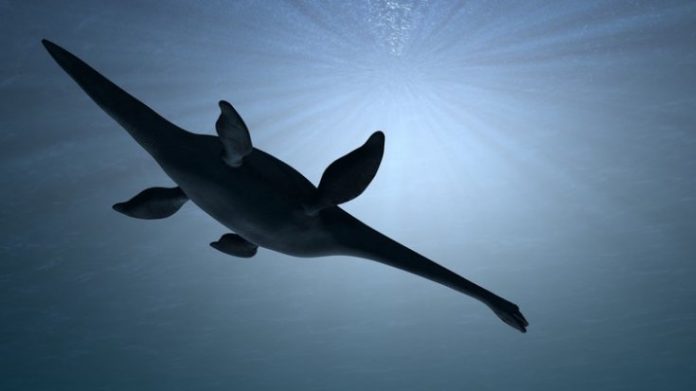Argentine scientists are celebrating the discovery of the remains of a giant plesiosaur, a four-finned carnivorous marine reptile that lived in Antarctic waters around 150 million years ago.
The ancient four-finned sea monster, with a huge body and a long, winding neck look remarkably like the Loch Ness monster. However, unlike Nessie, as the mythical creature is fondly known, the recently discovered plesiosaur was very real and roamed the Earth’s oceans at a time when Antarctica was part of the Gondwana continent.
“This record of plesiosaurus is 80 million years older than what was known for Antarctica,” paleontologist José Patricio O’Gorman, who is a researcher at the Museo de la Plata (MLP) and CONICET, said in a statement from the National University of La Matanza. “It was the first paleontological campaign that we carried out in this outcrop that is like a frozen sea of 150 million years in an excellent state of conservation.”
“The discovery is pretty extraordinary, because the rock types at the site weren’t thought conducive to the preservation of bones, like the vertebrae of this marine reptile,” Soledad Cavalli, a paleontologist at Argentina’s National Scientific and Technical Research Council said, Phys.com reported. “At this site, you can find a great diversity of fish, ammonites, some bivalves, but we did not expect to find such an ancient plesiosaur.”
Scientists had to take a two-hour long helicopter ride from Argentina’s Marambio Base in Antarctica to travel to the very edge of the frozen continent. It was here that they found the bones of the plesiosaur, which was measured to be around 12 meters.
“It was very exciting to get there, to a place that nobody had stepped on in 23 years,” said Dr. José O’Gorman.
“It is the furthest place we have come from with vertebrate paleontology campaigns in Antarctica,” Cavalli added. “The Argentine campaigns are usually carried out in the vicinity of the Marambio Base (in the Marambio, James Ross and Vega Islands), but here we have widened the range of action and we are interested in going to places even further away.”
According to Cavalli, the specimen was found stunningly well-preserved because the bottom of the sea, where the ancient creature’s remains were hidden until recently, had little oxygen for other organisms to survive. This prevented the specimen from being damaged by other marine animals and also ensured that the process of putrefaction did not occur.
Plesiosaurs have fascinated palaeontologists since their discovery in the 1700’s. Earlier this month, researchers discovered the oldest plesiosaur specimen from the Triassic Period in Germany. Although plesiosaurs were technically not dinosaurs, the two different kinds of creatures lived together on Earth for millions of years, before a massive asteroid wiped out both the populations around 66 million years ago.





























